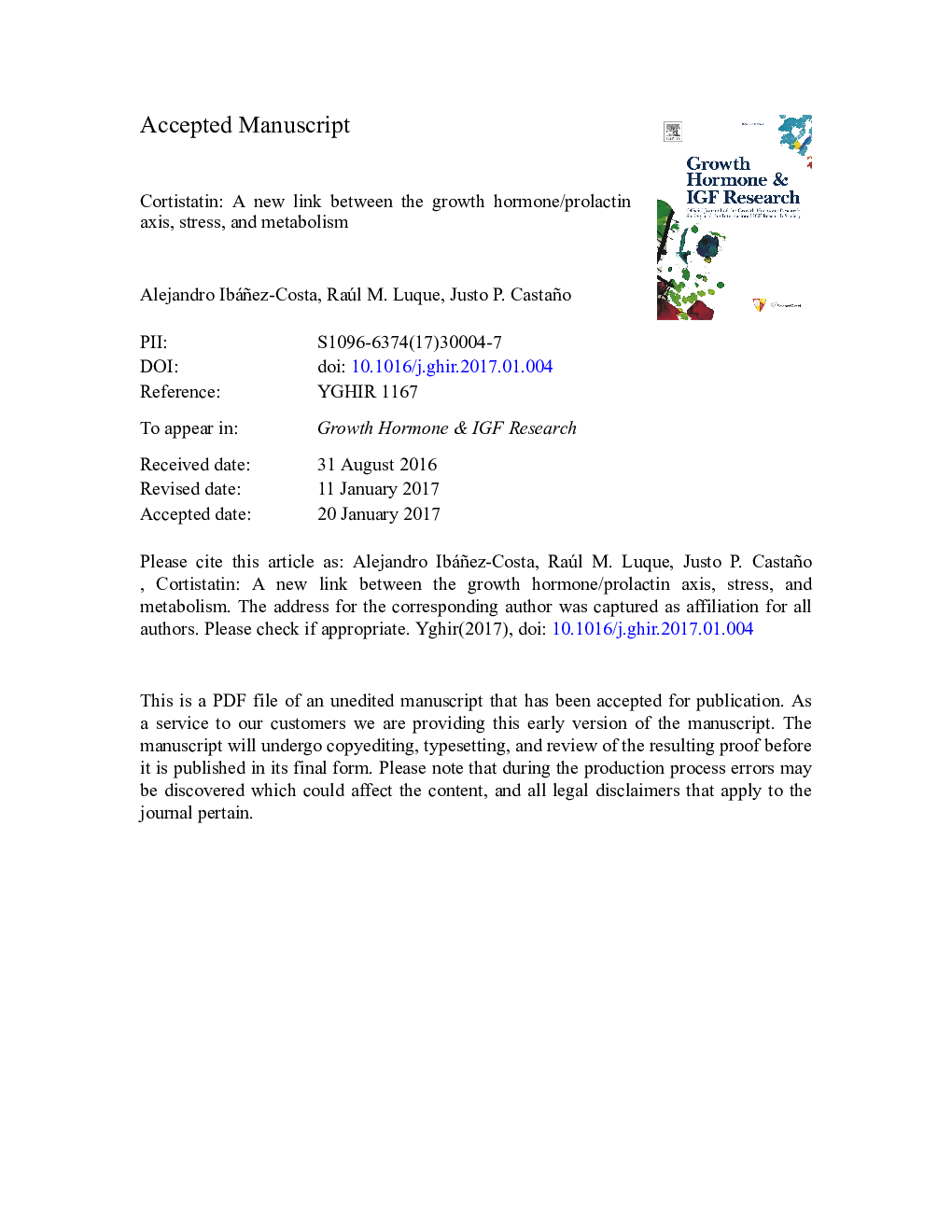| کد مقاله | کد نشریه | سال انتشار | مقاله انگلیسی | نسخه تمام متن |
|---|---|---|---|---|
| 5587907 | 1568948 | 2017 | 22 صفحه PDF | دانلود رایگان |
عنوان انگلیسی مقاله ISI
Cortistatin: A new link between the growth hormone/prolactin axis, stress, and metabolism
دانلود مقاله + سفارش ترجمه
دانلود مقاله ISI انگلیسی
رایگان برای ایرانیان
کلمات کلیدی
موضوعات مرتبط
علوم زیستی و بیوفناوری
بیوشیمی، ژنتیک و زیست شناسی مولکولی
علوم غدد
پیش نمایش صفحه اول مقاله

چکیده انگلیسی
Cortistatin is a neuropeptide originally identified in cortical brain regions, which displays a high structural and functional homology with somatostatin. However, cortistatin possesses distinct, unique functions, in the immune and central nervous systems, and it also shows specific endocrine effects, particularly on pituitary growth hormone, prolactin and adrenocorticotropin axes. Somatostatin and cortistatin bind similarly to the five native somatostatin receptors, sst1-sst5, whereas both compounds bind differentially to the recently discovered truncated variants of the sst subtype 5 (sst5TMD4, sst5TMD5); moreover, only cortistatin is able to bind other non-sst receptors (GHS-R and MrgX2). The non-overlapping tissue-specific distribution of each neuropeptide, together with the differential receptor binding profile, may be the cause of the singular effects of cortistatin. In this review we have provided and overview of the role of cortistatin on pituitary function by summarizing: 1) Its direct effect on pituitary cells using in vitro primary cultures derived from different species (from chicken to human); 2) Its putative physiological role revealed by in vivo assays, enabling to explore cortistatin effects on growth hormone, prolactin and adrenocorticotropin axes; and 3) The information provided by studying cortistatin knock-out mice. Altogether, these studies provide compelling evidence that cortistatin is a singular regulator of endocrine function, distinct from somatostatin.
ناشر
Database: Elsevier - ScienceDirect (ساینس دایرکت)
Journal: Growth Hormone & IGF Research - Volume 33, April 2017, Pages 23-27
Journal: Growth Hormone & IGF Research - Volume 33, April 2017, Pages 23-27
نویسندگان
Alejandro Ibáñez-Costa, Raúl M. Luque, Justo P. Castaño,